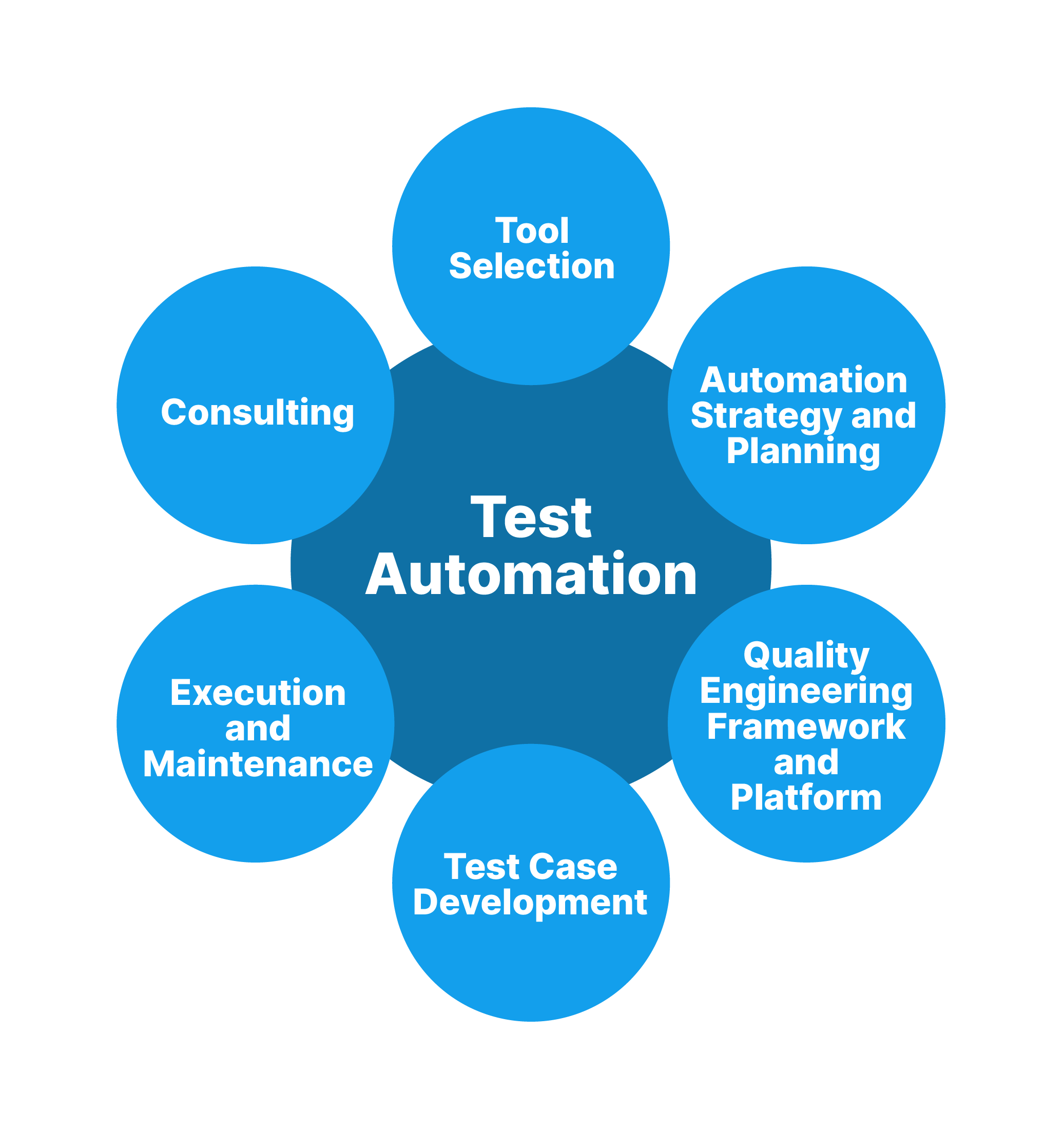Checking out the Future of Automation Testing in Software Application Advancement
Checking out the Future of Automation Testing in Software Application Advancement
Blog Article
Ensuring Success in Automation Evaluating: Trick Metrics, Difficulties, and Solutions Every QA Team Need To Know
In the world of software program top quality guarantee, the landscape of automation screening is ever-evolving, demanding a meticulous approach to make certain seamless operations. Trick metrics act as the compass leading QA groups with the vast surface of test automation, clarifying development and locations for improvement. Nevertheless, challenges impend large, typically casting shadows on the course to success. By understanding these obstacles and applying effective options, QA teams can browse with intricacies with finesse. The journey to understanding automation screening is paved with subtleties that need a keen eye for monitoring, analysis, and constant renovation. automation testing. As the industry pushes forward, the pursuit for optimal efficiency in automation screening continues to be a constant quest, prompting QA groups to furnish themselves with the expertise and approaches necessary for triumph.
Significance of Secret Metrics
Understanding the value of essential metrics is vital for examining the efficiency and performance of automation testing procedures. Secret metrics act as quantifiable steps that provide useful understandings into different facets of the testing process, such as examination insurance coverage, test implementation time, flaw density, and examination case performance. By assessing these metrics, QA groups can identify bottlenecks, inefficiencies, and locations for enhancement within their automation screening framework.
One crucial aspect of vital metrics is their ability to track development and monitor the general wellness of the testing procedure (automation testing). They make it possible for stakeholders to make educated decisions based on data-driven understandings, which can lead to more efficient testing techniques and far better source appropriation. In addition, key metrics can help teams established reasonable objectives, gauge the success of automation efforts, and show the ROI of automation testing efforts

Usual Difficulties Encountered
Difficulties commonly encountered in automation screening processes can considerably affect the total efficiency and effectiveness of QA teams. Automation testing might not cover all facets of screening, such as use and individual experience screening, which still need manual intervention. Overcoming these difficulties calls for proper planning, calculated test case choice, robust upkeep procedures, ample resources, and a clear understanding of the limitations of automation testing.
Efficient Solutions for Challenges
To deal with the obstacles encountered in automation testing, executing effective options is vital for boosting the performance and productivity of QA teams. One vital service is to buy durable training programs for QA groups to ensure they have the needed skills to effectively use automation tools. Training can bridge knowledge voids, enhance understanding of automation structures, and enhance scripting capacities, ultimately resulting in extra effective examination Get the facts production and execution.
An additional crucial solution is to develop clear communication networks within the QA team and with other stakeholders, such as programmers and project managers. Reliable interaction helps in lining up expectations, sharing progress updates, and promptly dealing with concerns or roadblocks that might develop during the automation screening process.

Monitoring and Evaluation Techniques
Implementing efficient surveillance and analysis techniques is crucial for making sure the success and effectiveness of automation screening processes. By utilizing monitoring tools, discover this info here QA groups can track the performance of examination scripts, determine bottlenecks, and pinpoint locations for improvement. Real-time surveillance permits quick detection of issues, allowing quick response and resolution. In addition, analyzing examination results and metrics gives valuable insights into the top quality of the software application being evaluated and the effectiveness of the screening method.
One key method in monitoring and evaluation is using dashboards that consolidate relevant metrics and KPIs in a visually accessible format. These control panels supply a thorough introduction of examination execution condition, test protection, issue patterns, and other important information. Frequently examining and evaluating these control panels can aid QA teams make informed choices, focus on tasks, and optimize testing efforts.
In addition, applying automated notifies and notifications based upon predefined limits can enhance proactive monitoring and prompt treatment. By establishing signals for efficiency discrepancies or test failings, teams can attend to concerns quickly and avoid them from rising. In general, tracking and analysis techniques play a crucial role in guaranteeing the effectiveness and success of automation screening initiatives.
Continuous Enhancement Techniques
Enhancing the efficacy of automation screening processes demands the regular improvement of approaches and techniques. Constant enhancement strategies are crucial for QA groups to adjust to progressing modern technologies and deliver top notch software application products. One essential strategy to improving automation screening procedures is to carry out regular evaluations and retrospectives. By evaluating past screening cycles, teams can determine bottlenecks, inadequacies, and locations for improvement. Implementing comments loopholes and including lessons discovered right into future testing structures can yield significant renovations gradually.

Conclusion
In verdict, it is critical for QA groups to comprehend the essential metrics, challenges, and options in automation testing to ensure success. By carefully checking and assessing information, implementing effective remedies to common difficulties, and continuously boosting techniques, QA groups can maximize their testing processes and provide top quality software program items. Sticking to these methods will inevitably cause more effective and efficient automation screening practices.
By evaluating these metrics, QA teams can determine traffic jams, ineffectiveness, and areas for renovation within their automation testing structure.
In addition, crucial metrics can help teams set practical objectives, gauge the success of automation campaigns, and demonstrate the ROI of automation testing initiatives.
Difficulties commonly encountered in automation testing processes can considerably impact the general effectiveness and efficiency of QA teams. Automation testing may not cover all aspects of screening, such as use and user experience screening, which still need hands-on treatment.In final thought, it is vital for QA groups to understand the vital metrics, difficulties, and solutions in automation testing to guarantee success.
Report this page